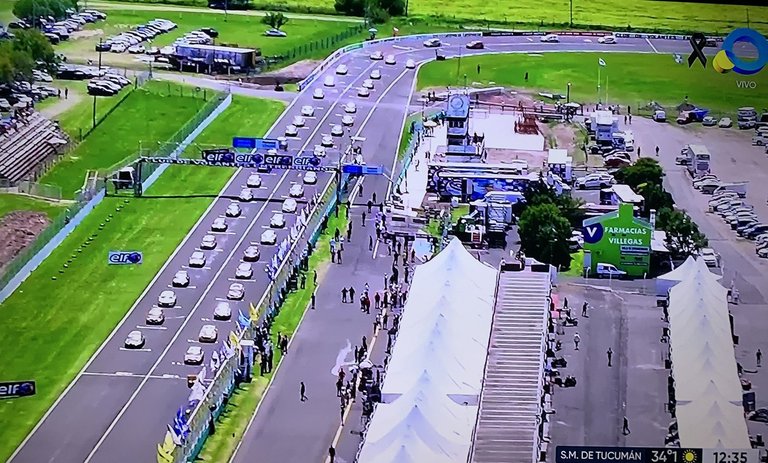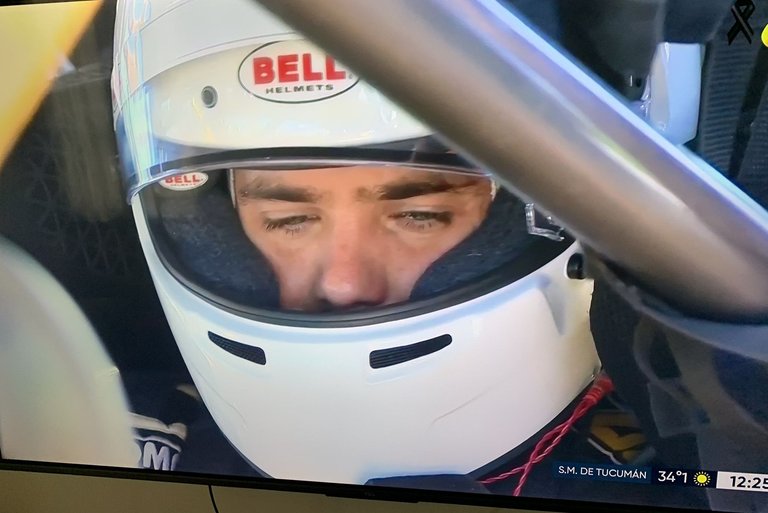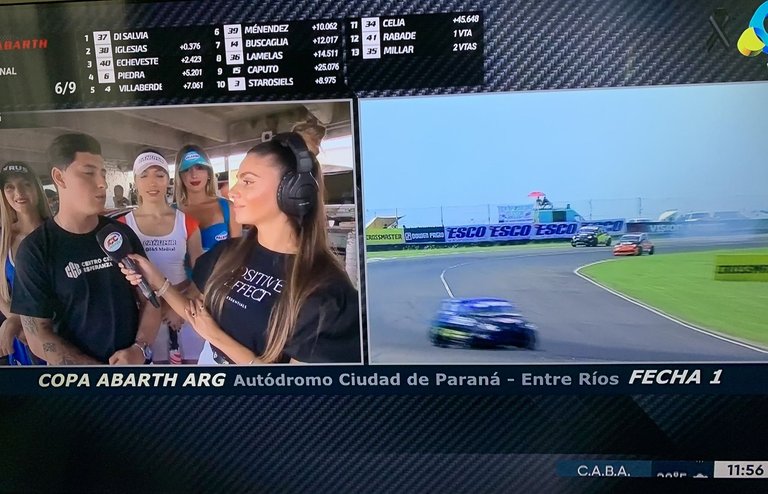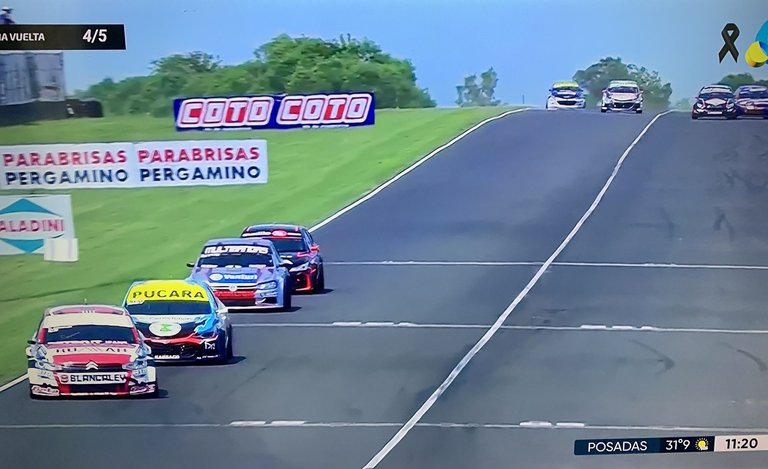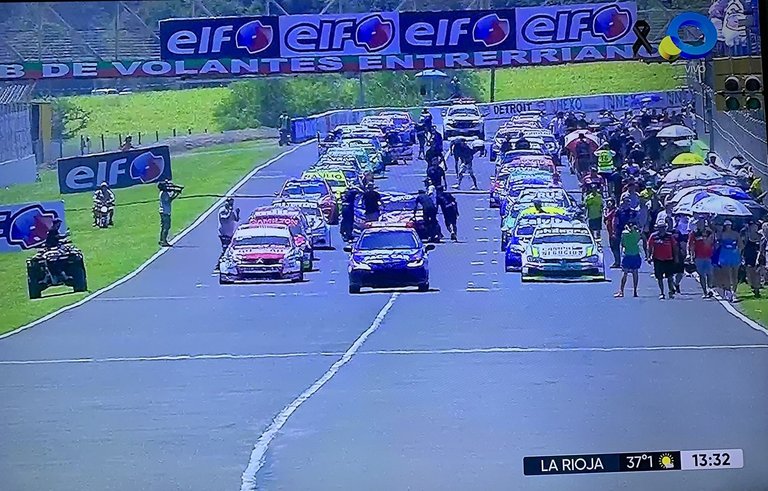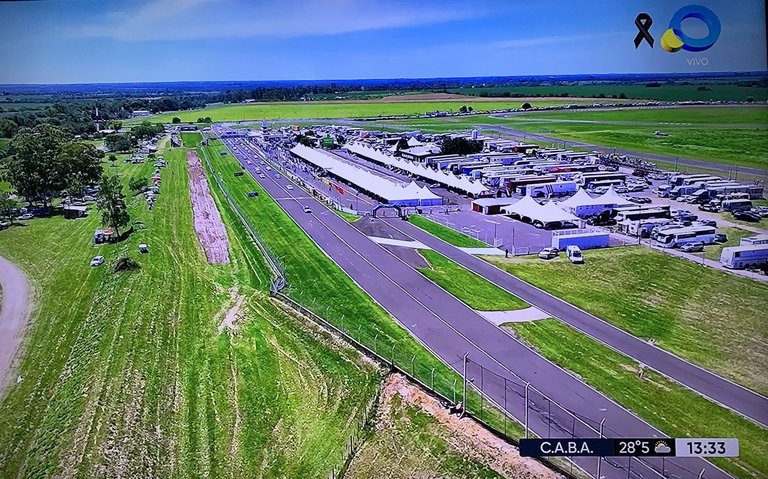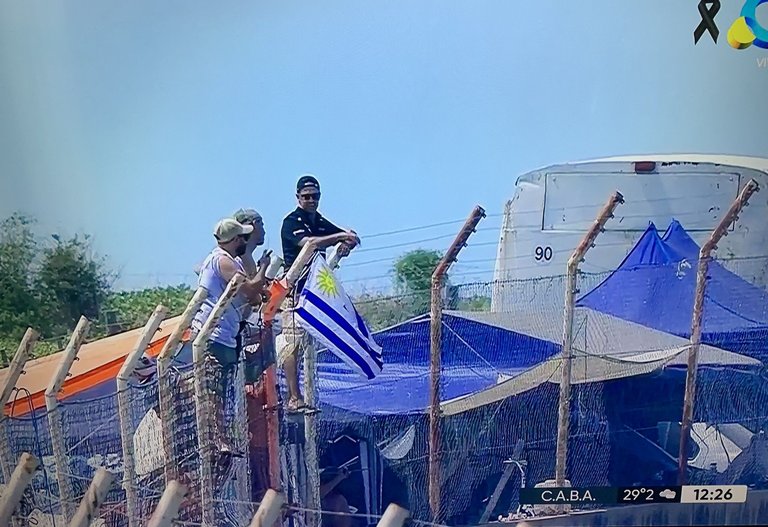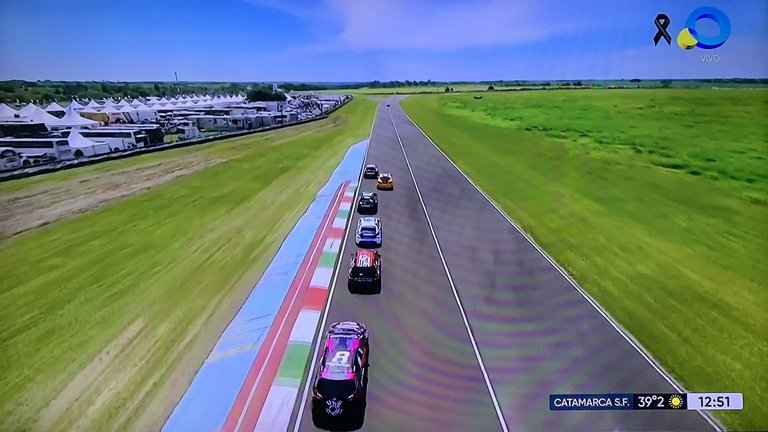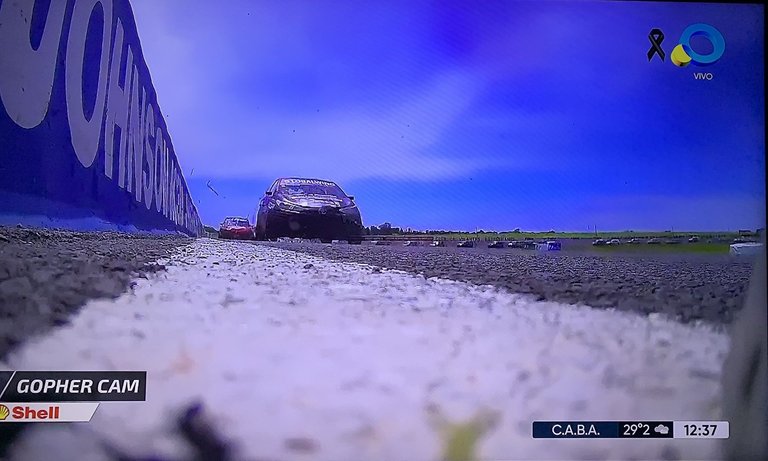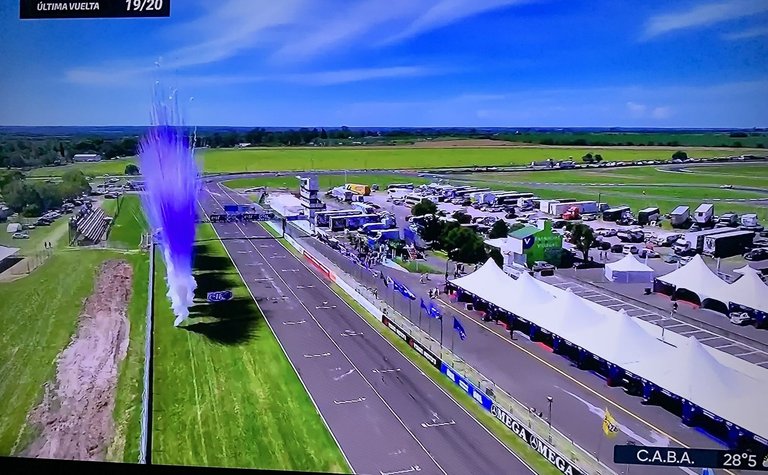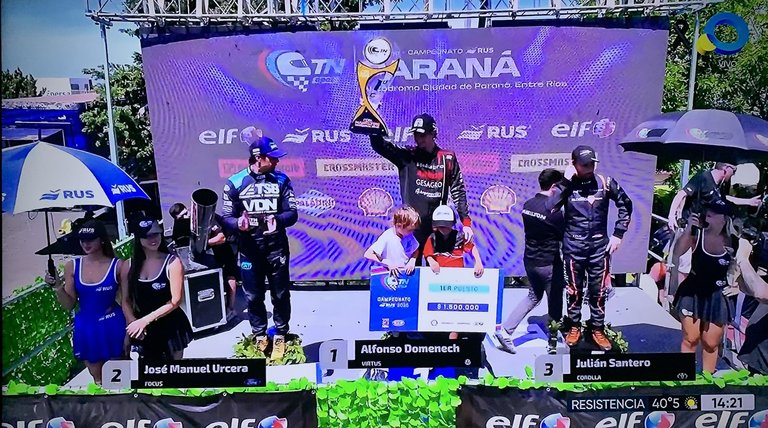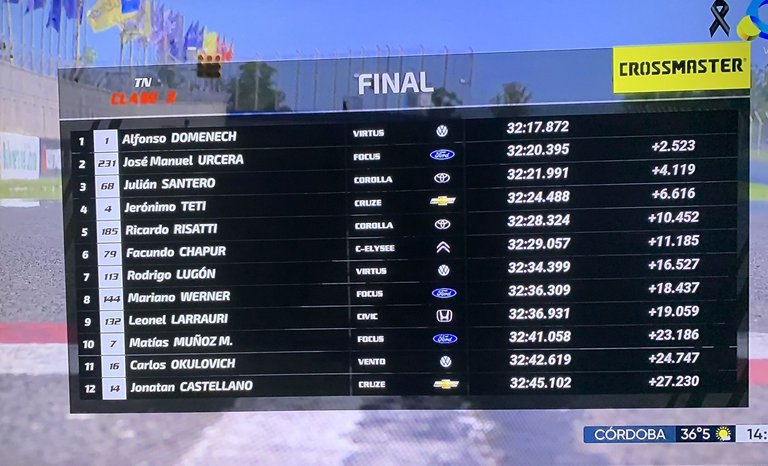En mi país, la tradición por el deporte motor es histórica. He comentado en otras publicaciones que el Automovil Club Argentino es una de las primeras asociaciones civiles automovilísticas del mundo y una de las entidades fundadoras de la FIA, federación internacional del automóvil.
Las carreras de autos son una tradición que comenzó en los albores del siglo XX y continúa con todas sus fuerzas en la actualidad, cambia el aspecto mecánico, cambia la estética, la seguridad, los circuitos, los formatos y los reglamentos, lo que no cambia es la pasión del público y de los pilotos que cada fin de semana entregan todo para dar los mejores espectáculos.
En el fin de semana que acaba de culminar se produjo el debut de la temporada del TN (turismo nacional), luego del receso por las fiestas de fin de año y el transcurrir del tórrido verano que acontece cada año en esta parte del mundo.
El TN es una categoría que comenzó siendo promocional, una de las antesalas para llegar a las máximas categorías del automovilismo argentino que son el TC2000 y el TC o turismo carretera, la máxima expresión de tradición, potencia y velocidad en el ámbito local. Pero esta categoría que se divide en clase 2 y clase 3 se ha forjado una buena fama y hoy en día muchos pilotos no la ven solo como un escalón para llegar a lo más alto sino como un objetivo a lograr y permanecer, es una categoría que enorgullece a sus pilotos de pertenecer.
La clase 2 nuclea vehículos de hasta 1600 cm3 de cilindrada y allí vemos en estos momentos autos de calle como el Peugeot 208, el Chevrolet Onix, los Toyota Yaris y Etios, el Ford Fiesta y el Volkswagen Gol; mientras tanto, la clase 3 es para los vehículos más grandes de hasta 2000 cm3: el Ford Focus, el Chevrolet Cruze, el Volkswagen Virtus, el Honda Civic, el Citroen C-Elysee y el Toyota Corolla entre otros.
La actividad comienza el jueves anterior con entrenamientos libres y continúa el viernes y sábado con más pruebas y la clasificación que divide a los nutridos grupos en 3 series donde el que se queda con el mejor tiempo en clasificación lidera la serie 1, el segundo la serie 2 y el tercero la serie 3, el resto se acomoda en cada una de ellas de acuerdo a su propio tiempo en la clasificación.
Las 3 series de cada clase corren por la mañana del domingo una carrera corta de pocas vueltas, número que depende del largo del circuito, el resultado de esas 3 series determinará el orden de largada de la carrera final que se desarrolla en el mediodía del domingo y donde corren todos, no hay eliminados.
La cantidad de participantes en la clase 2 que largó la carrera principal da para el asombro: 47 autos, mientras tanto la clase 3 contó con 37 vehículos que largaron esa carrera final.
Luego de las series de cada clase se desarrolla la competencia de la clase Abarth, una marca de Fiat que identifica un tipo de vehículos deportivos con mayores prestaciones que los automóviles de serie, en este caso todos los de la categoría son Fiat 500. Una carrera interesante donde la paridad es el punto distintivo y donde los pilotos intentan demostrar que están para grandes cosas.
El autódromo de la ciudad de Paraná, capital de la provincia de Entre Ríos, se presentó en excelentes condiciones; sus instalaciones, emplazadas en un marco rural y alejadas de las grandes urbes, es algo que caracteriza a muchos de los principales escenarios de la categoría que se jacta de ser la más federal de todas ya que su extenso calendario incluye carreras en prácticamente todo el país. También es una categoría internacional porque en ambas clases hay pilotos de otros países de Latinoamérica.
La clase 2 fue ganada por Renzo Blotta tripulando un vehículo Toyota Yaris, fue una carrera accidentada donde el auto de seguridad debió ingresar en 3 oportunidades. Mientras tanto en la clase 3 el campeón vigente Alfonso Domenech comenzó de la mejor manera al llevarse su serie y la final, Domenech condujo un Volkswagen Virtus que de esta manera gana su segunda carrera en la categoría y de forma consecutiva, la anterior en la última del año anterior y que sirvió a Domenech para consagrarse campeón.
Un gran espectáculo que espero quede medianamente reflejado en las fotografías que tomé desde mi TV; no es lo mismo que estar presente en el circuito, pero muchos afirman, entre ellos yo, que se tiene un mejor panorama y se puede apreciar mejor las carreras desde una cómoda ubicación en el living de nuestra casa.
No tenemos el ruido ensordecedor de los motores, la adrenalina de los boxes ni el humo de los asados del particular público que asiste a estos espectáculos en la Argentina, pero cuando hace 30 grados centígrados de temperatura, sinceramente les digo que no envidio para nada a los que se acercaron hasta Paraná.
Local motorsports
In my country, the tradition of motor sports is historic. I have mentioned in other publications that the Automobile Club of Argentina is one of the first civil automobile associations in the world and one of the founding entities of the FIA, the international automobile federation.
Car racing is a tradition that began at the dawn of the 20th century and continues with all its strength today. The mechanical aspect changes, the aesthetics, the safety, the circuits, the formats and the regulations change, but what does not change is the passion of the public and the drivers who give everything every weekend to give the best shows.
The weekend that just ended saw the debut of the TN (national tourism) season, after the break for the end of year holidays and the passing of the torrid summer that occurs every year in this part of the world.
The TN is a category that started out as a promotional category, one of the preludes to reaching the top categories of Argentine motorsport, which are the TC2000 and the TC or touring car, the ultimate expression of tradition, power and speed at the local level. But this category, which is divided into class 2 and class 3, has built up a good reputation and today many drivers see it not only as a stepping stone to reach the top but as a goal to achieve and remain in, it is a category that makes its drivers proud to belong to.
Class 2 includes vehicles of up to 1600 cm3 of displacement and there we currently see street cars such as the Peugeot 208, the Chevrolet Onix, the Toyota Yaris and Etios, the Ford Fiesta and the Volkswagen Gol; Meanwhile, class 3 is for the largest vehicles up to 2000 cm3: the Ford Focus, the Chevrolet Cruze, the Volkswagen Virtus, the Honda Civic, the Citroen C-Elysee and the Toyota Corolla among others.
The activity begins the previous Thursday with free practice and continues on Friday and Saturday with more tests and the classification that divides the large groups into 3 series where the one with the best time in classification leads series 1, the second series 2 and the third series 3, the rest are placed in each of them according to their own time in the classification.
The 3 series of each class run on Sunday morning a short race of a few laps, the number that depends on the length of the circuit, the result of these 3 series will determine the starting order of the final race that takes place at noon on Sunday and where everyone runs, there are no eliminated.
The number of participants in class 2 that started the main race is astonishing: 47 cars, while class 3 had 37 vehicles that started the final race.
After the series of each class, the Abarth class competition takes place, a Fiat brand that identifies a type of sports vehicles with greater performance than standard cars, in this case all of the category are Fiat 500s. An interesting race where parity is the distinctive point and where the drivers try to show that they are up to great things.
The racetrack in the city of Paraná, capital of the province of Entre Ríos, was in excellent condition; its facilities, located in a rural setting and far from the big cities, is something that characterizes many of the main stages of the category that boasts of being the most federal of all since its extensive calendar includes races in practically the entire country. It is also an international category because in both classes there are drivers from other Latin American countries.
Class 2 was won by Renzo Blotta driving a Toyota Yaris vehicle. It was an eventful race where the safety car had to be used three times. Meanwhile, in Class 3, the reigning champion Alfonso Domenech started in the best way by taking his heat and the final. Domenech drove a Volkswagen Virtus car, which thus won his second race in the category and in a row. The previous one was the last race of the previous year, which allowed Domenech to be crowned champion.
A great show that I hope is somewhat reflected in the photographs I took from my TV. It is not the same as being present at the circuit, but many say, including myself, that you have a better view and can better appreciate the races from a comfortable location in the living room of our house. We don't have the deafening noise of the engines, the adrenaline of the pits or the smoke from the barbecues of the particular public that attends these shows in Argentina, but when the temperature is 30 degrees Celsius, I sincerely tell you that I don't envy those who came to Paraná at all.
Héctor Gugliermo
@hosgug
